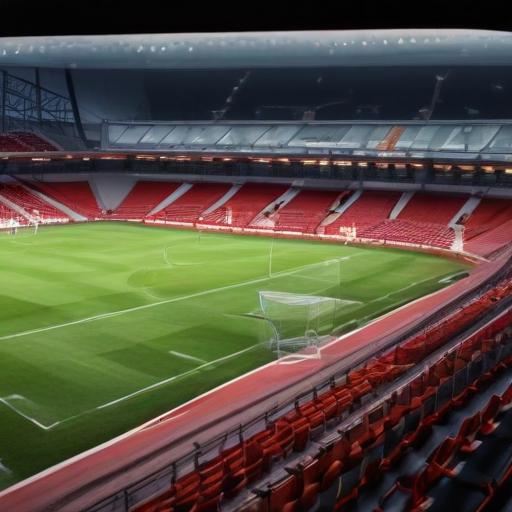Everton’s Hill Dickinson Stadium is taking shape as a new chapter for both the club and Liverpool’s waterfront, with a first league game just days away and holidaymakers unexpectedly in the mix along Regent Road.
On Monday, builders were still putting the finishing touches high up on the signage while renovations continued inside one of the bars facing the £800m venue. The peculiar sight in this part of town was not a stray crowd of supporters but cruise-ship passengers from the Regal Princess, who walked 20 to 25 minutes from the dock to take in the newAddition to the Premier League skyline. Everton even hints at future stadium and dockland tours for cruise passengers as part of a broader push to draw visitors to this transformed corner of the city.
Where once the area around Bramley-Moore Dock felt industrial and neglected, signs of life are returning. New streets, bars, apartments and street lighting point to a gradual revival, with Everton’s stadium cited as the catalyst for a broader transformation that includes the nearby Ten Streets creatives scene and the Titanic hotel. After a long and costly journey—22 years since Everton’s relocation dream to a waterfront stadium began and eight years after Bramley‑Moore Dock was identified as the preferred site—the project reaches its footballing milestone this Sunday when the first competitive match is played at Hill Dickinson Stadium, against Brighton.
The debate surrounding the project’s impact has included criticism that the development harmed Liverpool’s UNESCO world heritage status. Proponents argue the club’s new home is a corrective to decades of neglect at the docks, including the fact that Bramley-Moore Dock remained largely inaccessible behind gates and even contained unexploded World War II shells when the club took possession. The stadium, designed by US architect Dan Meis, blends brick-clad stands reminiscent of nearby warehouses with a futuristic curved roof, and sits on the banks of the Mersey as a symbol of both tradition and modernity.
Nearby, the Bramley Moore hotel has stood relatively isolated for years and now faces a new neighborhood alongside several recently opened bars. The Terrace, a three-floor venue that previously housed a tyre company, has become a focal point for plans to create a local hub with dining options, shops and more pubs. The owner’s team envisions a small-town vibe developing quickly—a “Baltic Market-type” atmosphere—with potential concerts and other events boosting the area’s appeal.
Local voices reflect cautious optimism. Liverpool Waterfront North councillor Dave Hanratty has warned that the area’s investment seems heavily skewed toward alcohol-licensed premises, while Terrace manager Becki Heron believes the area could become its own village, with new restaurants, takeaways and shops gradually filling in. The aim, she says, is to reach a point within two years where the district feels unrecognizable in a positive way, with Everton’s licensing powers and concert potential helping to accelerate renewal.
The stadium itself has faced teething problems typical of a big new venue: long queues for entry and for food and drink during safety-certification test events, and some stock shortages. Transport has been the biggest ongoing headache outside the stadium, though improvements were evident during the Roma test event, with more shuttle buses, better train frequency, and revised parking measures. Council leader Liam Robinson acknowledged there is still work to be done, but remains confident that tweaks will continue to improve the experience as the season unfolds.
Fans connected to the club’s South Stand—an imposing 14,000-seat tier—have shared their own hopes for the new era. One Everton supporter, Bill Kinsella of Bootle, described the stadium as modern and crucial for the club to compete financially with the Premier League’s top teams. He also spoke of personal plans to attend, even as he underwent treatment nearby, highlighting the sense of occasion surrounding Sunday’s fixture against Brighton.
Everton’s owners, the Friedkin Group, have also signaled broader ambition for the waterfront, with plans to develop Nelson Dock next door and to use the dockside site to attract new business and leisure activity. In the meantime, the club has held three test events to secure a safety certificate ahead of a 52,769-capacity home, with the final tweaks expected as game day approaches.
In a broader sense, Hill Dickinson Stadium marks a fresh start for a club rooted in two historic offshoots: Everton’s first league match at Anfield in 1888 and their Goodison Park debut in 1892. Sunday’s kickoff, and the weeks that follow, will signal whether the area’s renaissance can sustain itself beyond the football season, as developers, residents and visitors alike watch to see if the waterfront can become a lasting hub of culture, commerce and sport.
Summary
Everton’s new Hill Dickinson Stadium stands as a catalyst for regeneration on Liverpool’s Bramley‑Moore Dock, drawing in cruise-ship tourists and signaling a broader revival for a once-deprived waterfront. The venue’s first league game this Sunday will test not only football but the area’s ability to balance development with community needs, transport, licensing, and a slow but steady arrival of shops, bars and attractions. The project’s long-term outlook remains positive as the Friedkin Group eyes adjacent developments and the city continues its transformation.
Additional comments
– If you’re visiting for opening weekend, plan for possible transport changes and expect ongoing adjustments as the system adapts to a new major venue.
– The ongoing debate over UNESCO status reflects tension between heritage concerns and economic renewal; the long-term impact on the area will be watched closely by city officials and residents alike.
– The narrative emphasizes both the commercial potential of a vibrant waterfront district and the need to maintain a balanced, inclusive community environment as the area evolves.
